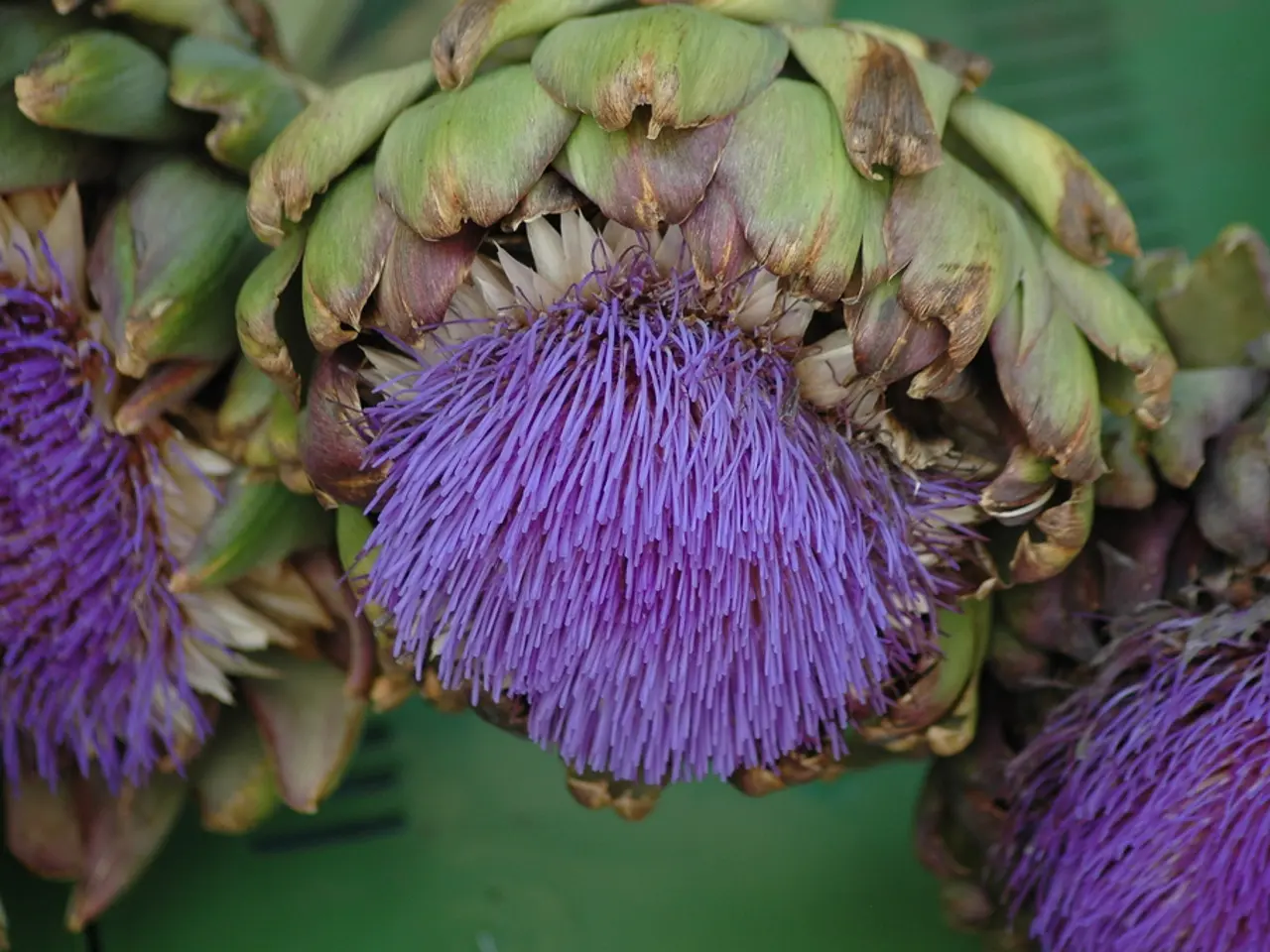High-Profit Superfood Cultivation: Artichokes, a Valuable Commodity Fueling Farming Profits and Booming Market Demand
Growing a thistle delight, known as artichoke, ain't just a task, it's an adventure! Originally hailing from the Mediterranean, this perennial wonder is now finding its home in the lush gardens of India. Topped with silvery-green leaves and purple-tinged flower heads, the star of the show is the edible immature flower bud, rich in antioxidants, fiber, vitamin C, and folate – making it a superfood for heart and liver health.
For Indian growers, artichoke presents both a challenge and a lucrative market opportunity. Suitable for temperate to subtropical climates, parts of Himachal Pradesh, Uttarakhand, Sikkim, Karnataka, and even Maharashtra are a go for artichoke cultivation.
Climate and Season
Artichokes thrive in cool winters and mild summers with ideal temperatures between 10°C to 25°C. In India, October to December is the best time to sow seeds, depending on your region's climate. If you're in the north, start seeds indoors by late September, and transplant them once the frost has passed.
Soil and Site Preparation
Artichokes prefer loamy, well-draining soil rich in organic matter. The ideal pH level should be between 6.5 to 7.5, as they have deep roots that require extensive soil preparation of up to 12-18 inches deep. Enrich the bed with well-rotted compost or farmyard manure to boost fertility.
Cultivation: Planting Methods
Propagate your artichokes through seeds, suckers (offshoots), or root divisions. While seed-grown plants may take longer to mature, they are easier to obtain. Here's how to do it:
- Sow seeds indoors in nursery trays or pots using a light potting mix.
- Maintain a warm environment (around 20°C) for seed germination, which takes around 10-14 days.
- Once seedlings have 4-5 true leaves, transplant them to the main bed, keeping them spaced 3-4 feet apart.
Artichokes need good sun exposure, with at least 6 hours of sunlight each day.
Watering, Fertilization, and Mulching
Artichokes are heavy feeders and moderate drinkers. Water them regularly, but ensure good drainage to avoid root rot and fungal diseases.
Organic fertilizers or compost teas every 3-4 weeks during the growing season will help the plants thrive. Adding liquid seaweed or neem cake can boost their flowering and pest resistance. Mulching with straw or dried leaves not only retains moisture but also helps suppress weeds.
Harvesting Artichokes
Aim to harvest artichokes when the buds are firm, tightly closed, and about the size of a tennis ball. If left unharvested, they'll bloom and become inedible. Use a sharp knife to cut the bud along with 1-2 inches of the stem. One plant can produce 6-10 buds in a season, depending on care and conditions.
In Indian kitchens, artichokes are still a rarity, but there's potential for creativity with these exotic veggies. From masala stir-fries and stuffed artichokes to pickled hearts and artichoke pulao – you can adapt them to local cuisines and share unique flavors with friends and family. Explore, experiment, and enjoy the culinary journey!
[1] https://www.hortasia.org/articles/cynara-scolymus-artichoke-cultivation[2] https://www.organicfarmingtutorial.com/artichoke-cultivation/[3] https://www.researchgate.net/publication/337902262_Artichoke_production_in_Karnataka_India_an_alternative_to_floriculture_cash_crops[4] https://www.franciscanmissionariesoftheeast.org/western-gardening-with-brahman-farmers/
- As artichokes mature in Indian gardens, home cooks can embark on a new culinary adventure, experimenting with unique recipes that incorporate these exotic vegetables into local dishes, such as artichoke pulao or pickled artichoke hearts.
- For those who have successfully cultivated artichokes in their home-and-garden, lifestyle magazines often feature tantalizing food-and-drink recipes that showcase the versatility of this superfood, boasting its heart- and liver-health benefits.
- To complement the growing popularity of artichoke cultivation in garden-friendly regions like Himachal Pradesh, Uttarakhand, Sikkim, Karnataka, and Maharashtra, some cooking enthusiasts have started blogs and YouTube channels dedicated to sharing garden-to-table recipes, garden maintenance tips, and gardening techniques to help others cultivate their thistle delights.




